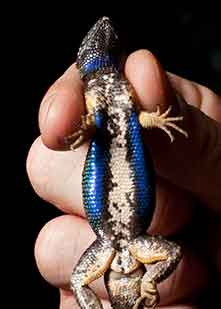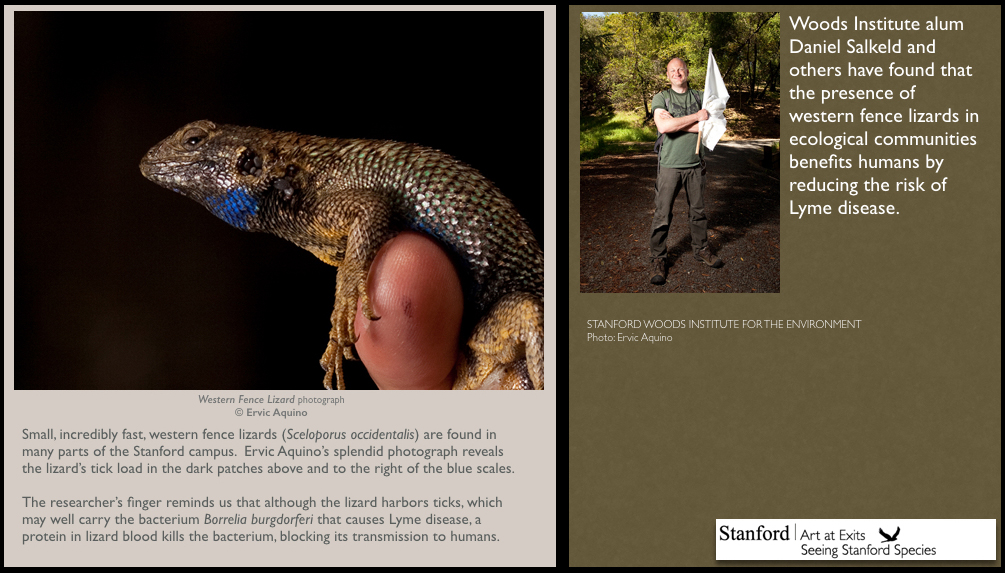|
| |
|
| |
 Campus Locations Campus Locations
You might see western fence lizards in many areas including grasslands and woodlands as well as areas around buildings, along fencing and roads and in gardens, bushes and trees.
|
|
| |
Campus sustainability |
| |
Lizards are insectivores and may be absent in areas where insects are controlled. They tolerate people although they may avoid areas of intensive use. |
| |
|
| |
Science |
| |
See these reports for links to related research: |
| |
*Tick sampling and analysis for Lyme disease surveillance and risk reduction (JRBP reporting on the work of Dan Salkeld and Eric Lambin)
* New Perspective on Biodiversity and Disease Risk (Rob Jordan, Stanford Woods Institute for the Environment, reporting on the work
of James Holland Jones and Dan Salkeld)
*Tick population plummets in absence of lizard hosts (Sarah Yang, Berkeley News reporting on the work of Andrea Swei and colleagues)
|
| |
|
| |
Art |
| |
You may miss noticing the bright blue ventral color in western fence lizards. The following discuss stripes and bright colors
in other lizards that successfully attract attention (including, hopefully, that of artists--we need more lizard art!): |
| |
 © Ervic Aquino © Ervic Aquino |
*Lizard ‘racing stripes’ redirect predator attacks (Patrick Monahan, Science, reporting on the work by Gopal Murali and Ullasa
Kodandaramaiah--Deceived by stripes: conspicuous patterning on vital anterior body parts can redirect
predatory strikes to expendable posterior organs (Royal Society Open Science, 8 June 2016. DOI: 10.1098/rsos.160057)
|
|
| |
|
| |
To add to the Science or Art links, submit bird sightings, comment on the exhibit or the web presentation, or ask questions, please use
the web forms on the Art at Exits home page. |


